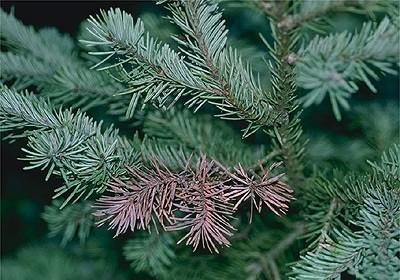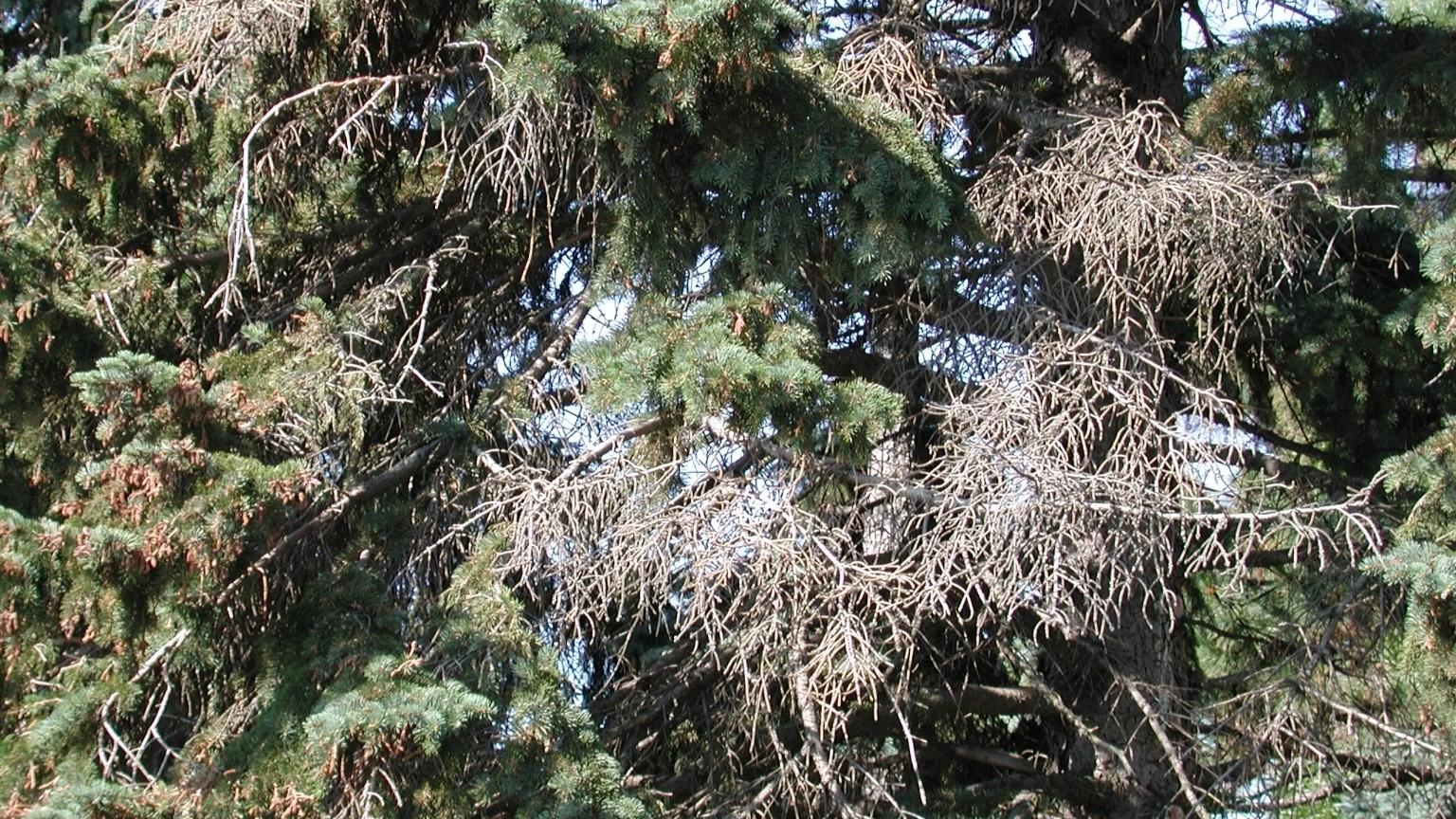Colorado blue spruce trees, although not native or adapted to Maryland, are commonly planted in landscapes for their attractive color and shape. There are, however, two plant diseases that commonly infect and disfigure them. Both diseases also can occur simultaneously and progressively speed up the decline of this popular tree.

Rhizosphaeria needle blight on blue spruce.
Needle Cast or Needle Blight
The most common needle problem of blue spruce in Maryland is a fungal disease caused by Rhizosphaeria kalkoffii.
Symptoms
- On the lower branches, yellowing of first-year needles in mid-summer on 8-15 year-old trees.
- Then the needles turn brown, or sometimes purplish brown,before they defoliate through the late summer into fall.
- These symptoms will continue to spread upward and around the tree. Branches will decline and die after 3-4 years of successive defoliation.
- Tiny black spheres (the fungal spore structures) can be seen along the bottom of the needles with a hand lens or microscope.
Dieback or cytospora canker
The most common dieback disease of blue spruce in Maryland is caused by the fungal pathogen Leucostoma kunzei.

Blue spruce with dieback from Cytospora.
Symptoms
- Off-color to brown needles, first on lower branches of 10-15 year-old trees in spring through early summer, progressing to entire branches.
- The needles can remain attached during the summer until they defoliate over the winter season leaving bare twigs and stems.
- The ornamental value of infected landscape trees will decline after several years of defoliation and symptom progression up the tree.
- The dark fungal fruiting bodies may be hard to find since the diseased bark is stuck together by the crystallized resin.
Infection starts in the spring on wounds caused by pruning cuts, insects, hail damage, or cracks caused by ice, or snow load. The disease causes large amounts of resin flow that appear as white crusty sap streaks on the bark. The infection period can extend from spring through fall depending on rainfall. Drought stressed trees are more vulnerable to this disease.
Practical management of both of these diseases is difficult because the infection period can extend from spring through fall depending on rainfall. Diseased branches can also serve as sources of infective spores for many years after infection and help intensify disease progression. Therefore, fungicide sprays are impractical for most homeowner trees. Severely diseased trees should be removed and replaced with better adapted conifers for the mid-Atlantic region.
Alternatives to Blue Spruce
If you are looking for a nice evergreen tree for your landscape, consider any of the following alternatives to blue spruce. These have fewer disease problems. Be sure to research the growing requirements (e.g., winter hardiness, etc.) for these trees, to make sure they are appropriate for your location in Maryland.
- Arizona cypress (Cupressus arizonica ‘Blue Ice’)
- Oriental spruce (Picea orientalis)
- Himalayan cedar (Cedrus deodara ‘Karl Fuchs’)
- Serbian spruce (Picea omorika)
- Eastern red-cedar, Juniperus virginiana ‘Grey Owl’ (with berries) or ‘Manhattan Blue’ (without berries).
- Bald cypress (Taxodium distichum) - deciduous evergreen, excellent for sites with wet soil.
By Dr. Dave Clement, Principal Agent, University of Maryland Extension, Home & Garden Information Center.
